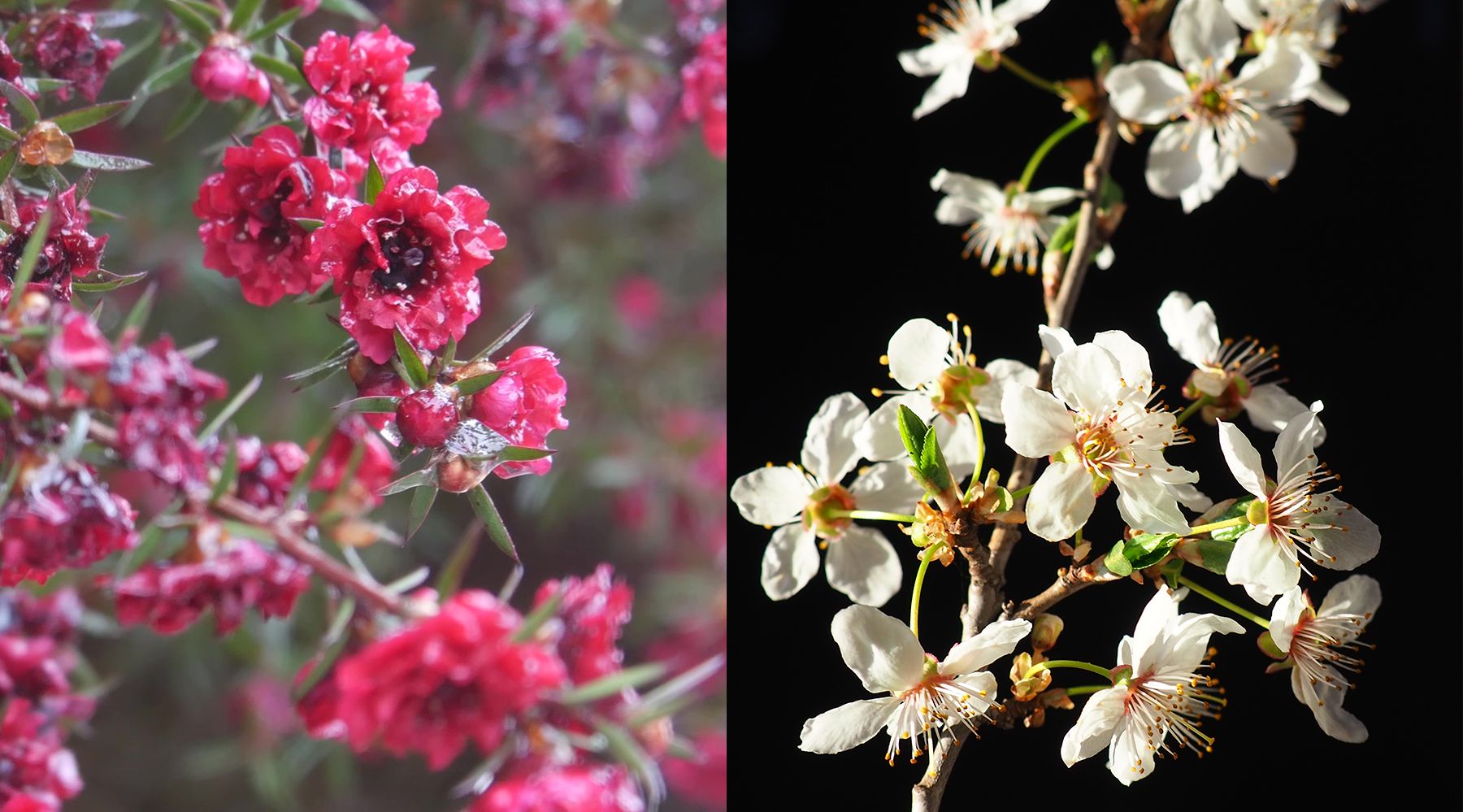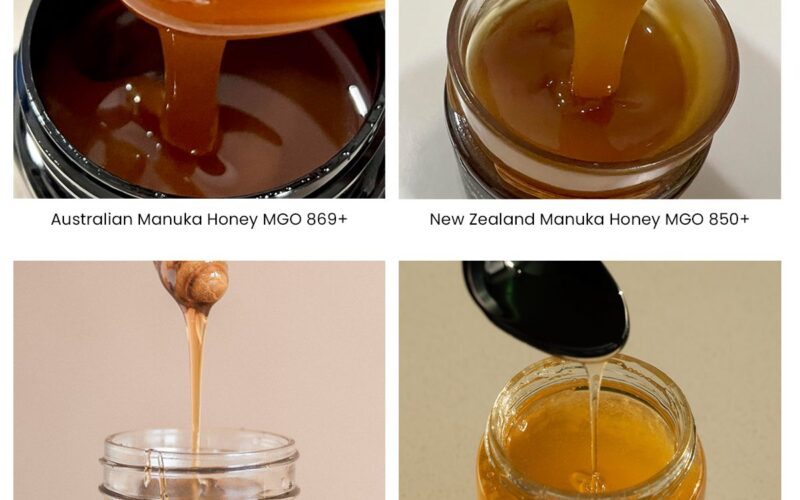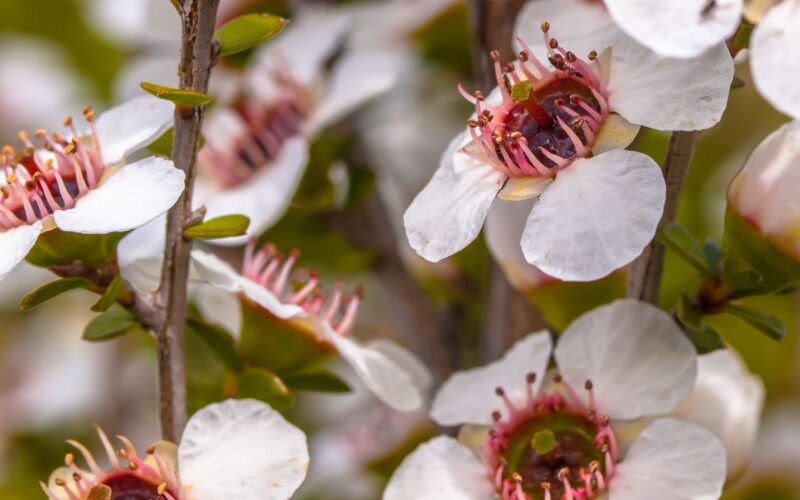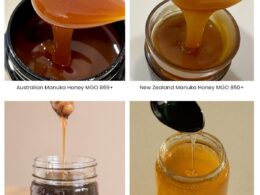Manuka honey has gained a reputation as a superfood, and for good reason. This unique type of honey is derived from the nectar of the Manuka bush (Leptospermum Scoparium), which is native to New Zealand and parts of Australia. Manuka honey has been used for centuries by indigenous Maori people and Australian Aborigines for its medicinal properties. Today, it is coveted worldwide for its potential health benefits, rich taste, and rarity. In this article, we will explore the differences between New Zealand and Australian Manuka honey and why it is so special.
Unique Properties of Manuka Honey
Manuka honey sets itself apart from regular honey due to its unique properties, which are attributed to the Manuka bush. The key compound responsible for its distinct characteristics is Methylglyoxal (MGO). MGO is found in higher concentrations in Manuka honey compared to other types of honey, resulting in its potent antimicrobial and antibacterial properties.

Another essential factor in determining the quality and potency of Manuka honey is the Unique Manuka Factor (UMF). The UMF measures the concentration of three signature compounds: MGO, Dihydroxyacetone (DHA), and Leptosperin. These compounds together contribute to the honey’s effectiveness in promoting wound healing, soothing sore throats, improving digestion, and enhancing skin health.
New Zealand vs. Australian Manuka Honey

While both New Zealand and Australian Manuka honey share many similarities, there are some differences worth noting:
1. Geographical Distribution
New Zealand Manuka honey is sourced from the pristine environment of the North Island and select areas of the South Island, where the Manuka bush flourishes in abundance. The temperate climate, with mild winters and warm summers, provides ideal conditions for the growth of these bushes. The clean, pollution-free air and fertile soil further contribute to the high quality of New Zealand Manuka honey.
In contrast, Australian Manuka honey is sourced from diverse regions across Australia, including New South Wales, Queensland, Victoria, and Western Australia. The varied climates and ecological conditions in these regions contribute to a unique range of Australian Manuka honey. Australia’s strict environmental conservation efforts ensure that Manuka bushes grow in a clean and unpolluted environment, allowing bees to produce pure and high-quality honey.
2. Nectar Variability
The Manuka bush, native to both New Zealand and Australia, plays a crucial role in the production of the highly sought-after Manuka honey. In New Zealand, there is predominantly one type of Manuka bush (Leptospermum Scoparium) that produces nectar for honey production. The consistency in the Manuka species results in a more uniform flavour profile and properties in New Zealand Manuka honey.
On the other hand, Australia is home to over 83 different Leptospermum species, with the Manuka bush being just one of them. This rich biodiversity leads to a more extensive variety of Australian Manuka honey, each with slightly different flavours and properties depending on the specific Leptospermum species from which the nectar is sourced.
3. Regulatory Standards
Both New Zealand and Australia have rigorous regulations and guidelines in place for Manuka honey production, ensuring consistent, high-quality products from each country. In New Zealand, the UMF Honey Association (UMFHA) governs the grading system, while in Australia, the Australian Manuka Honey Association (AMHA) has introduced the MGO grading system. These grading systems measure key components in the honey to guarantee its quality and authenticity.
Australia is well-known for its strictness in food safety and quality control, which is reflected in the high standards maintained by the Australian Manuka Honey Association. Similarly, New Zealand’s reputation for producing top-quality Manuka honey is upheld by the stringent regulations set forth by the UMF Honey Association. Both countries are committed to ensuring that their respective Manuka honey meets the highest standards of quality and purity for consumers worldwide.
4. Flavor Profile
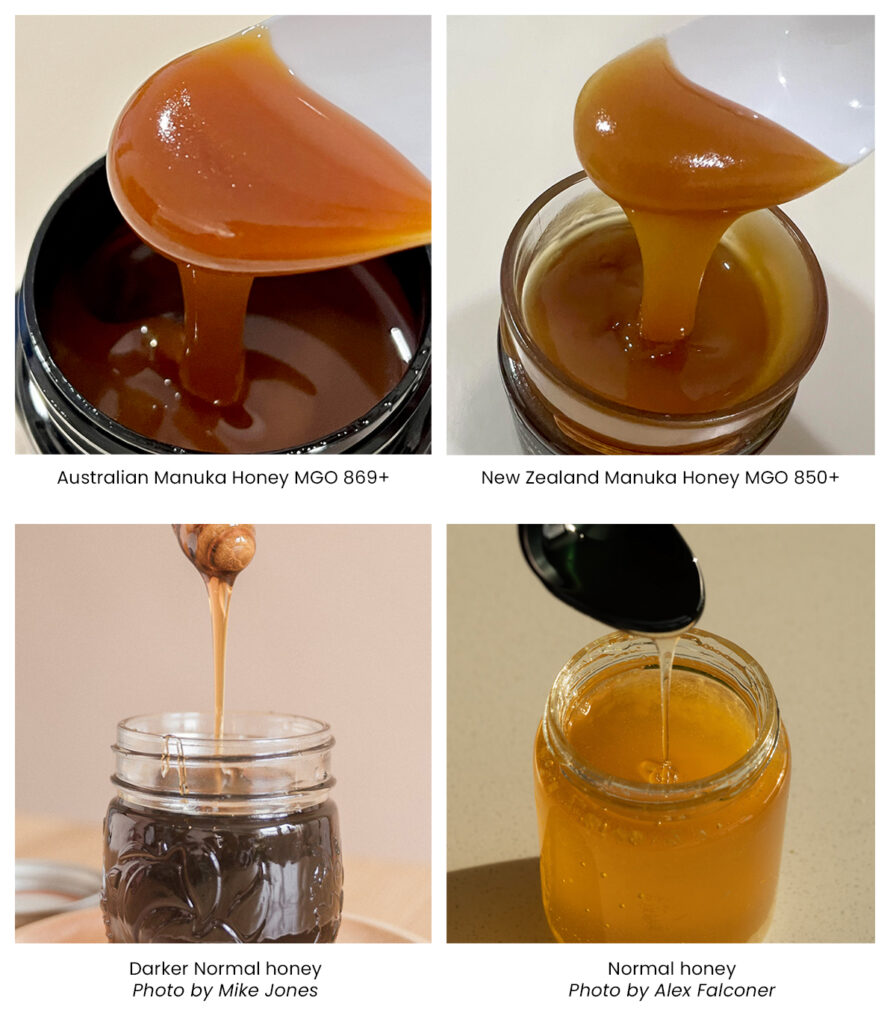
Flavours in New Zealand Manuka Honey
New Zealand Manuka honey is known for its distinctive, strong, and floral flavour profile. It often has a brighter colour, a thicker texture, and a rich, aromatic taste with a slightly bitter and medicinal aftertaste. The unique flavour can be attributed to the nectar produced by the Manuka bush (Leptospermum Scoparium) found across the country.
Flavours in Australian Manuka Honey
Australian Manuka honey exhibits a more diverse range of flavours due to the numerous Leptospermum species present in the country. While some Australian Manuka honey may share similarities with the New Zealand variety, it can have a variety of colours, and a more delicate texture and carries a more earthy taste. The flavour nuances in Australian Manuka honey can be attributed to the different types of nectar produced by the various Leptospermum species found throughout the country.
Both New Zealand and Australian Manuka honey offer unique and delightful flavour profiles, with Australia’s showcasing a more extensive variety due to the abundance of Leptospermum species in Australia. These distinct flavours and properties make Manuka honey a prized and versatile ingredient in various culinary and health applications.
Conclusion
Manuka honey is a remarkable and distinctive type of honey, backed by scientific research for its potential health benefits and known for its delicious, rich taste. Studies available in the National Institutes of Health (NIH) database and endorsed by the World Health Organization (WHO) have explored the antimicrobial, anti-inflammatory, and wound-healing properties of Manuka honey, further highlighting its uniqueness.
While New Zealand and Australian Manuka honey share many similarities, they differ in aspects like geographical distribution, nectar variability, regulatory standards, and flavour profiles. These differences contribute to the diverse range of Manuka honey available to consumers.
Regardless of its origin, incorporating Manuka honey into your diet can offer not only a delightful and flavorful experience but also potential health benefits supported by scientific evidence from reputable sources such as the NIH and the WHO.



